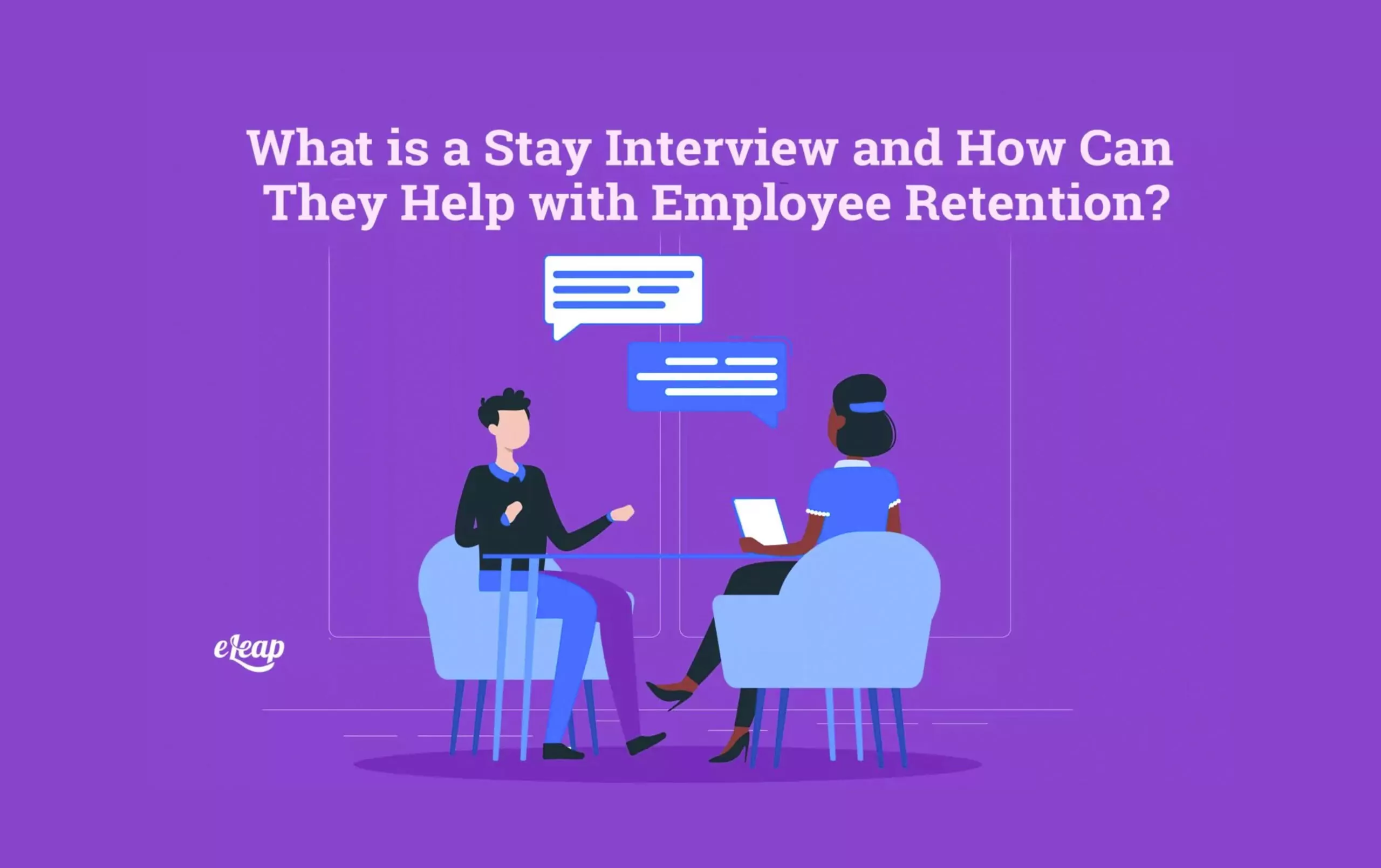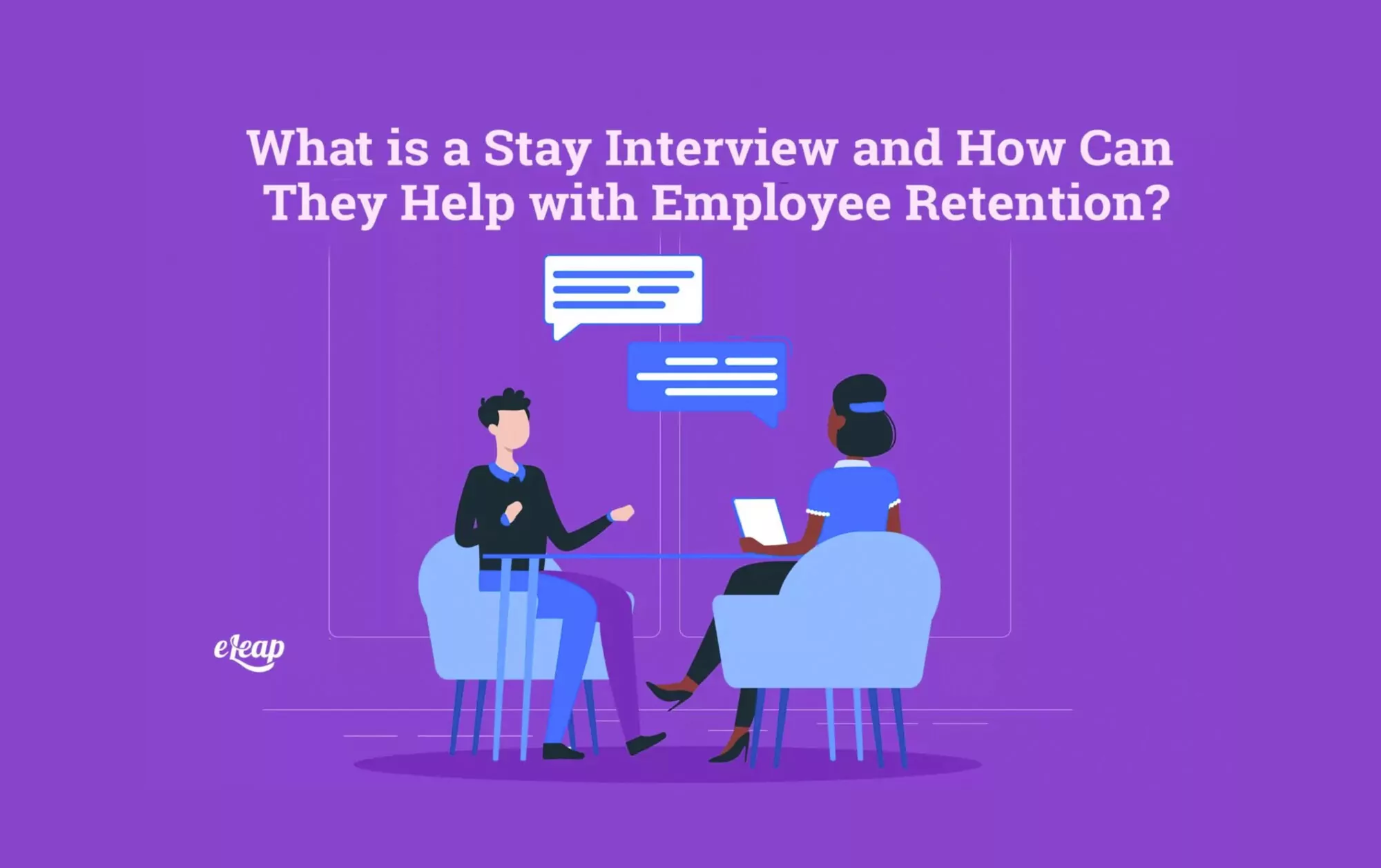What is a Stay Interview and How Can They Help with Employee Retention?

There are many methods implemented by organizational leadership teams designed to decrease turnover rates and increase employee retention, but a “stay interviews” is one of the most overlooked of these methods. Management will typically resort to feedback surveys, performance reviews, and employee appreciation efforts to help retain employees and reduce the costs associated with higher turnover rates. A more common style of interview used for this purpose is the exit interview, which many companies will use to get feedback on why employees are leaving. However, there’s one big problem with exit interviews – the employees are already out the door and are already a statistic in the company’s rate of turnover. For this reason, these more normalized retention strategies aren’t enough to keep good employees on board, and leadership teams need more tools in their toolkits.

The more tools a management team has to get ahead of any employee misgivings or recurring issues, the better, and a stay interview is one method that allows for that. Asking a former employee why they left after they’ve already done so only causes a company to lose out on a potentially great worker, while a stay interviews could have prevented the separation in the first place.
What is a Stay Interview?
While an exit interview is conducted after an employee has decided to leave, a stay interviews is utilized for current employees for the employer to gain insight regarding the employees’ job satisfaction, and, more specifically, why they are choosing to “stay” in the position. A stay interview is about learning why your company is an excellent place to work and what factors could be improved to keep employees happier. Stay interviews are meant to be an informal conversation as opposed to a formal review meeting, though it can be helpful for the interviewer to jot down a few notes.
What a Stay Interview is Not
Stay interviews should not be confused with one-on-ones or performance reviews. Those types of meetings are designed for an exchange of feedback between supervisors and employees, consisting of both positive feedback and constructive criticism. A stay interviews is specifically about the employee and his or her needs, likes and dislikes about their current position, and ultimately what is keeping them at their job. It is also not the type of conversation in which the employee’s salary should be discussed, and this topic should be saved for performance reviews. The focus of a stay interview is strictly for the employees to give feedback on their job position from their perspective.
Benefits of Using Stay Interviews
The main goal of stay interviews is to ultimately reduce turnover rates by gaining insight that will be used to improve employee satisfaction. There are several benefits to this retention method. Employees who are subjected to stay interviews feel their thoughts and opinions about their job are being heard and considered, which leads to a better foundation of trust between managers and lower employees. It’s a great way to build on an “open door policy” by practicing good communication between supervisors and employees and creating a safe space for candid conversations that get to the root of how an employee feels about their work environment and the job overall. The feedback collected in a stay interview can give team leaders concrete information on where positive changes need to happen within the dynamic of a job or work environment. Conducting stay interviews with all employees individually can help employers piece together any patterns or issues that are recurring with more than one employee, and these are the issues that should take priority in getting resolved.
Making a Stay Interview Successful
If you’re a team leader or supervisor charged with implementing stay interviews with your subordinates, there are a few things you’ll want to keep in mind to make sure you are successful in doing so. The first step is to schedule the interview ahead of time while giving the employee a heads up, and also explain why the interview is taking place and what will be discussed. This way, the employee can come to the stay interview prepared with questions or issues to bring up and prevents them from being caught off-guard, while also ensuring all of their concerns are addressed.
Stay interviews should be conducted in a neutral location so that the employee can be as comfortable as possible. Casual settings work best, like an empty conference room or even a courtyard bench if the campus of your business has some outdoor space that could be utilized for this purpose. The right environment helps the employee feel more comfortable than they would if the interview took place in their supervisor’s office behind closed doors. Their level of comfort will directly influence how open and transparent they’ll be during the stay interview itself.
Perhaps the most important part of a stay interview is the questions that are asked of the employee. Managers should avoid questions that would only merit a “yes” or “no” answer, as they won’t do much for granting detailed feedback from the employee. Questions should be focused on drawing dynamic answers from the employee. Some good question examples are:
- What do you look forward to the most for each day on the job?
- What keeps you working at this company?
- What would you change about your job?
- What types of changes would give you more job satisfaction?
- What are your motivational blocks?
- What fuels your motivation?
- Do you have any talents that you feel are going unused in your current role?
- Which of your skills do you feel serves the company the best and do you like exercising that skill?
- What is your favorite form of feedback or recognition?
- What can management do more or less of to help you in your position?
- What would influence you to leave your current job?
Summarize and close the interview by reviewing the notes you’ve taken and recapping key points with the employee, especially those points regarding what makes the employee want to stay, and what may be encouraging them to make a change in their employer. You don’t have to give them an immediate action plan for solving any misgivings, but simply let them know you’re going to consider their feedback and follow up with them when you think you’ve identified some solutions. You always want to make sure the interview is concluded on a positive note.
Stay interviews are great opportunities to express appreciation to the employee, not only for their work in general but also for being willing to submit to the interview. It’s also important to follow up a short time after the interview to reiterate your appreciation of their participation, and perhaps to mention a particular piece of feedback discussed during the interview that you found most insightful, and any problem-solving points you may have identified since the interview. This follow-up contact helps to drive home the point of a manager’s sincerity in wanting to know the answers to the questions asked in the interview and gives the employee reassurance that any dissatisfactory issues are going to be addressed. The clarification lets the employees know that their feedback isn’t just going into the wind.
Other than what types of questions are asked in a stay interview, the other most important part of making the meeting successful is to actually use the information learned to effect necessary changes as described by the employee. If nothing is done to problem solve based on the feedback, all you have accomplished is an hour or so of wasted time and a nice conversation. There is no point in obtaining any type of feedback if no changes are made based on constructive criticism exchanged in the discussion.
Are Stay Interviews Right for Your Company?
It’s also important for the organization to have an established base of communication and trust between supervisors and employees. The more comfortable an employee feels talking to their supervisor in general, the more open they will be with communicating their feelings during a stay interview. If a company is suffering from employee dissatisfaction related to a lack of communication and trust within the workplace, then it might not be the right time to implement a new strategy involving stay interviews. Instead, the organization should focus on remedying the existing issues at hand. One great way to do this is to involve the management team in some leadership training, and also allow the subordinate employees to participate in workshops related to communication within the workplace. For these types of issues to resolve, it has to come from effort on both sides of the coin.
Conclusion
Stay interviews are great tools for organizations to gather information to help create the framework for necessary changes that will lead to better employee retention. When used correctly and with other techniques for gathering employee feedback and increasing employee satisfaction. Stay interviews can help improve the working lives of all staff within the company, which will ultimately lead to greater success for the business.